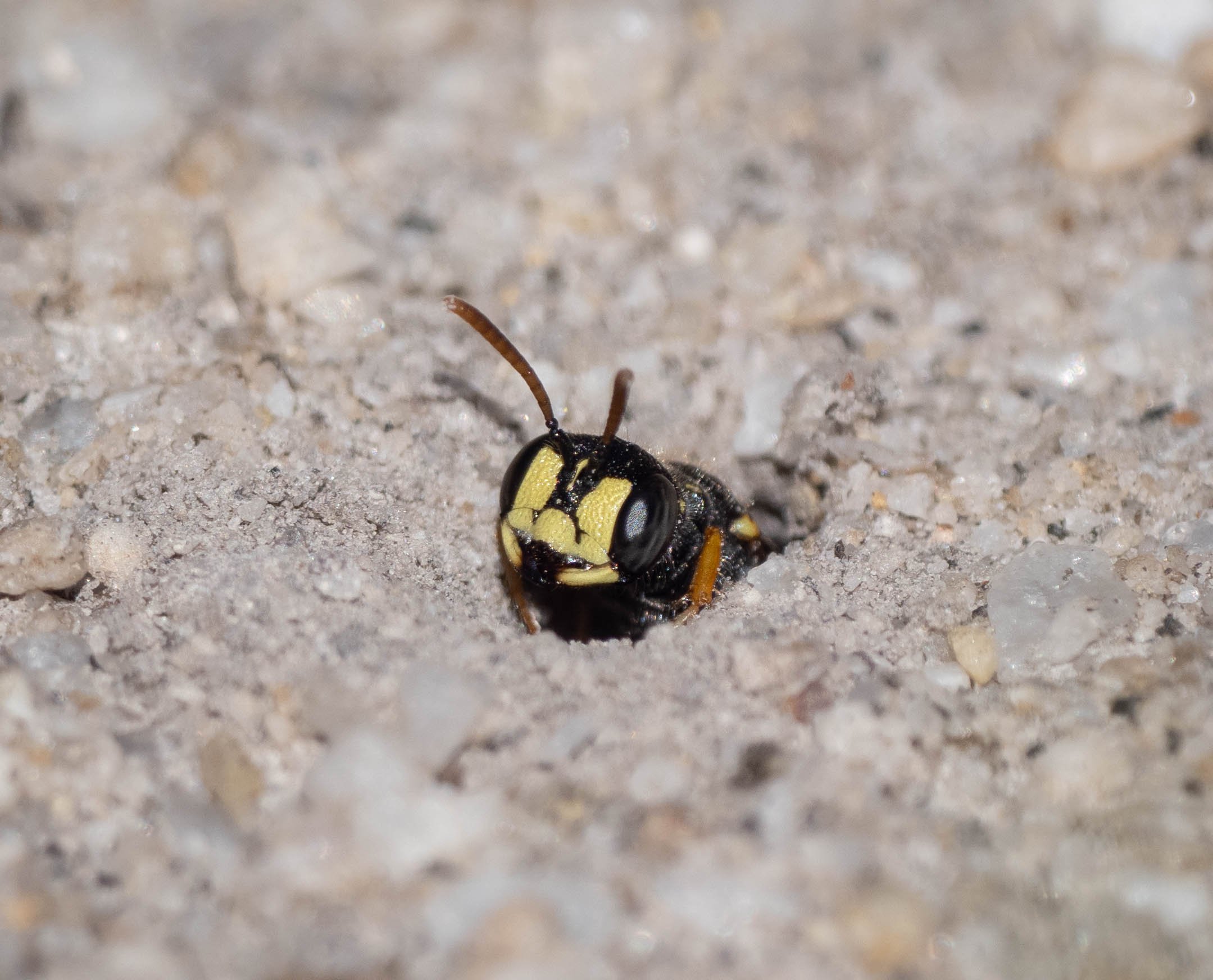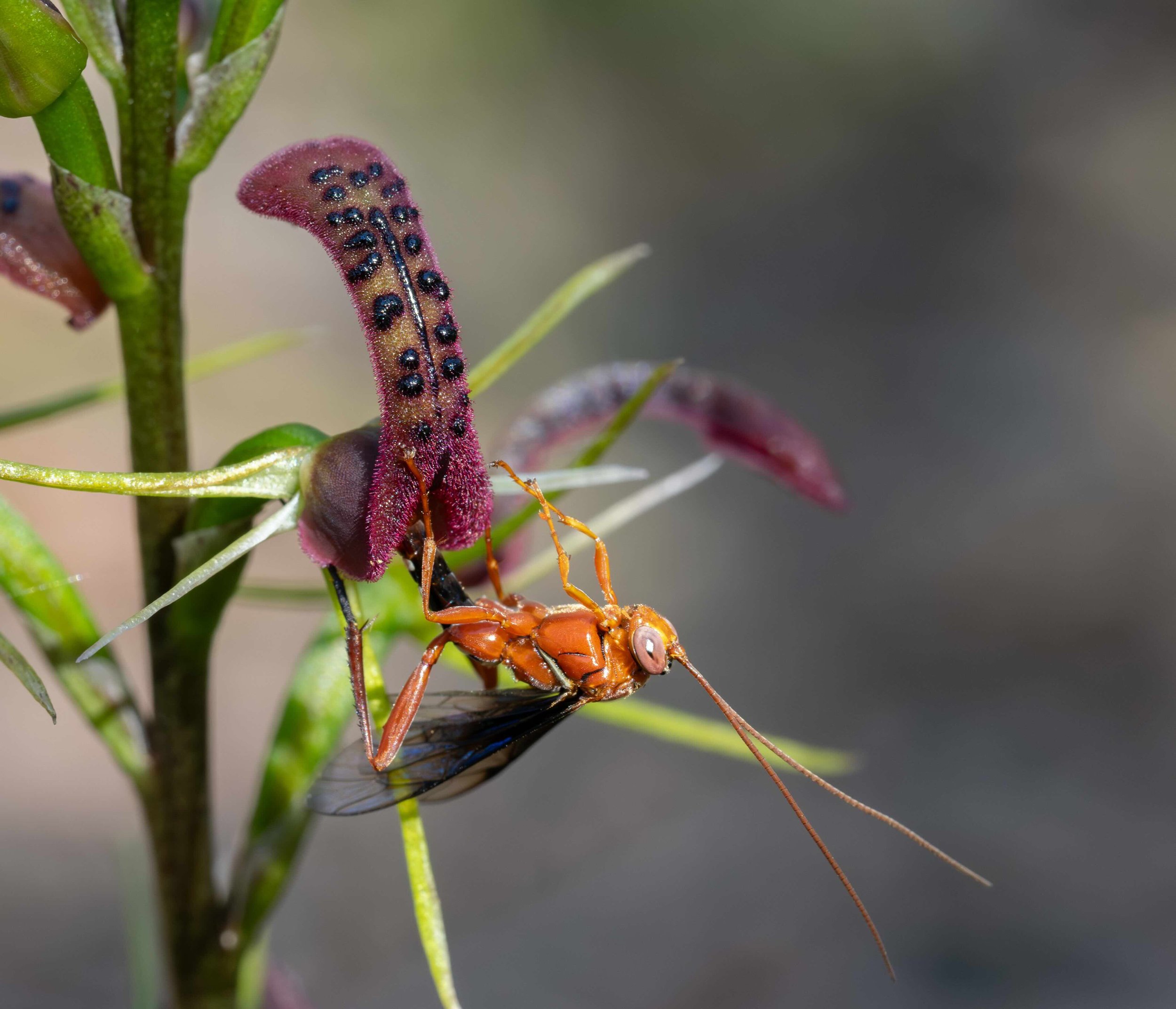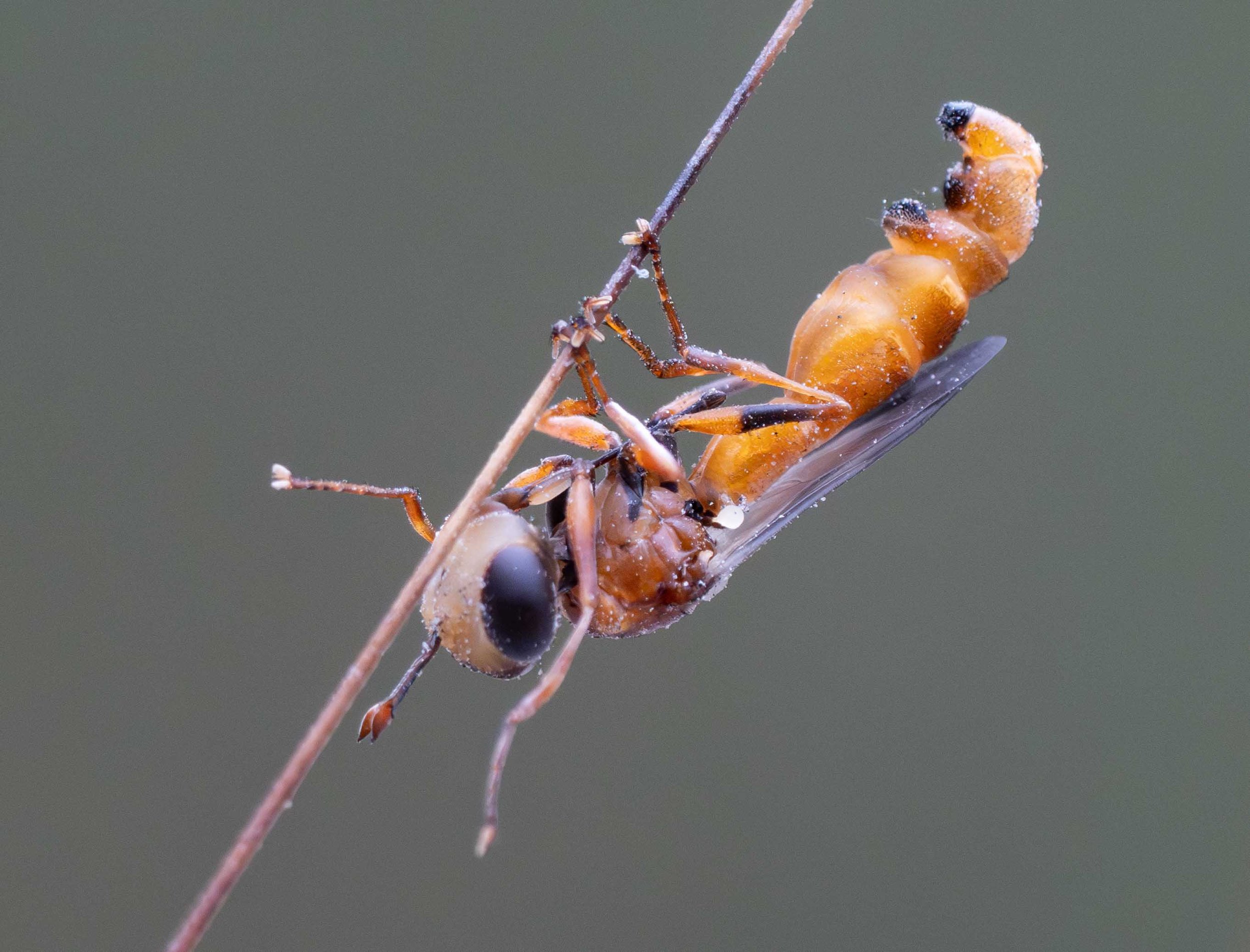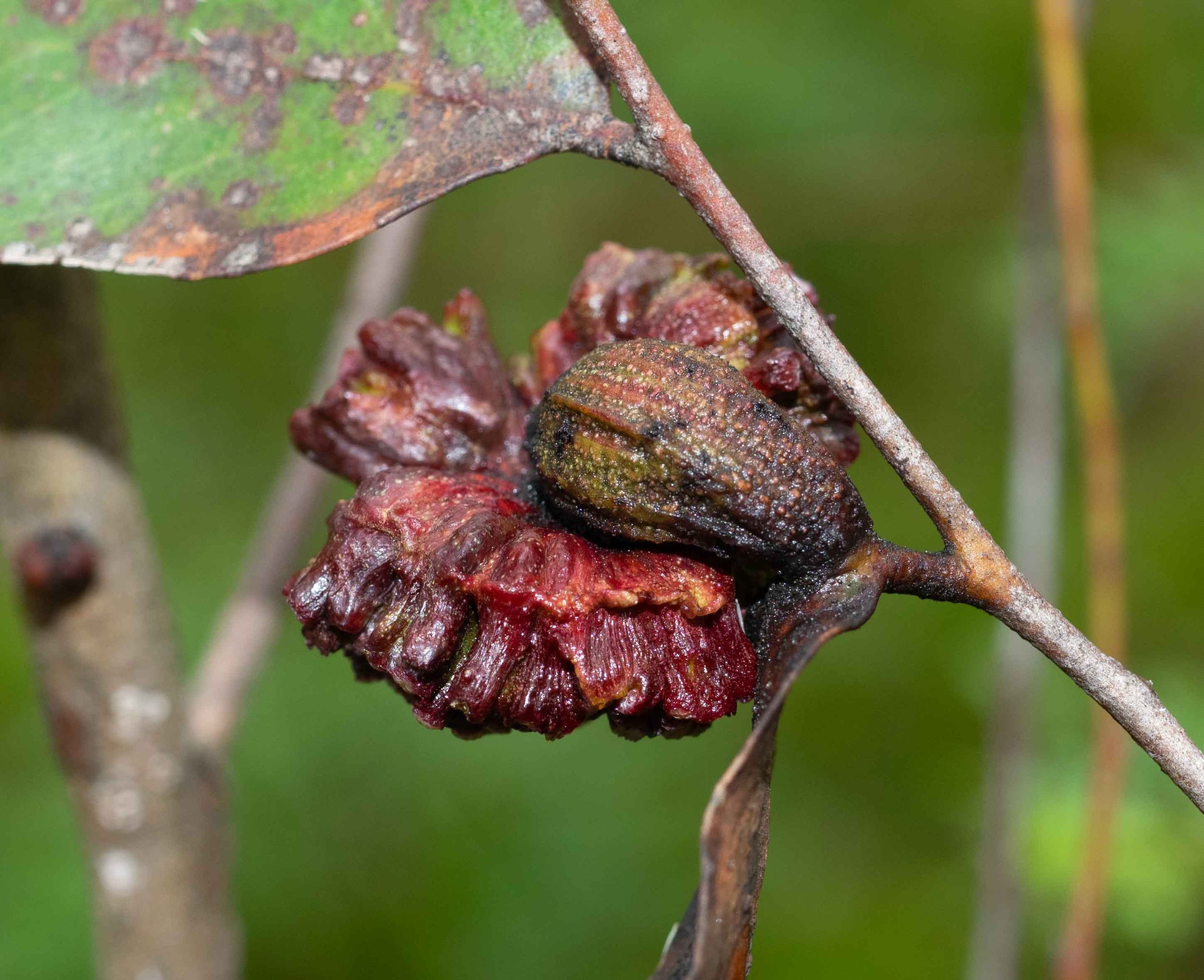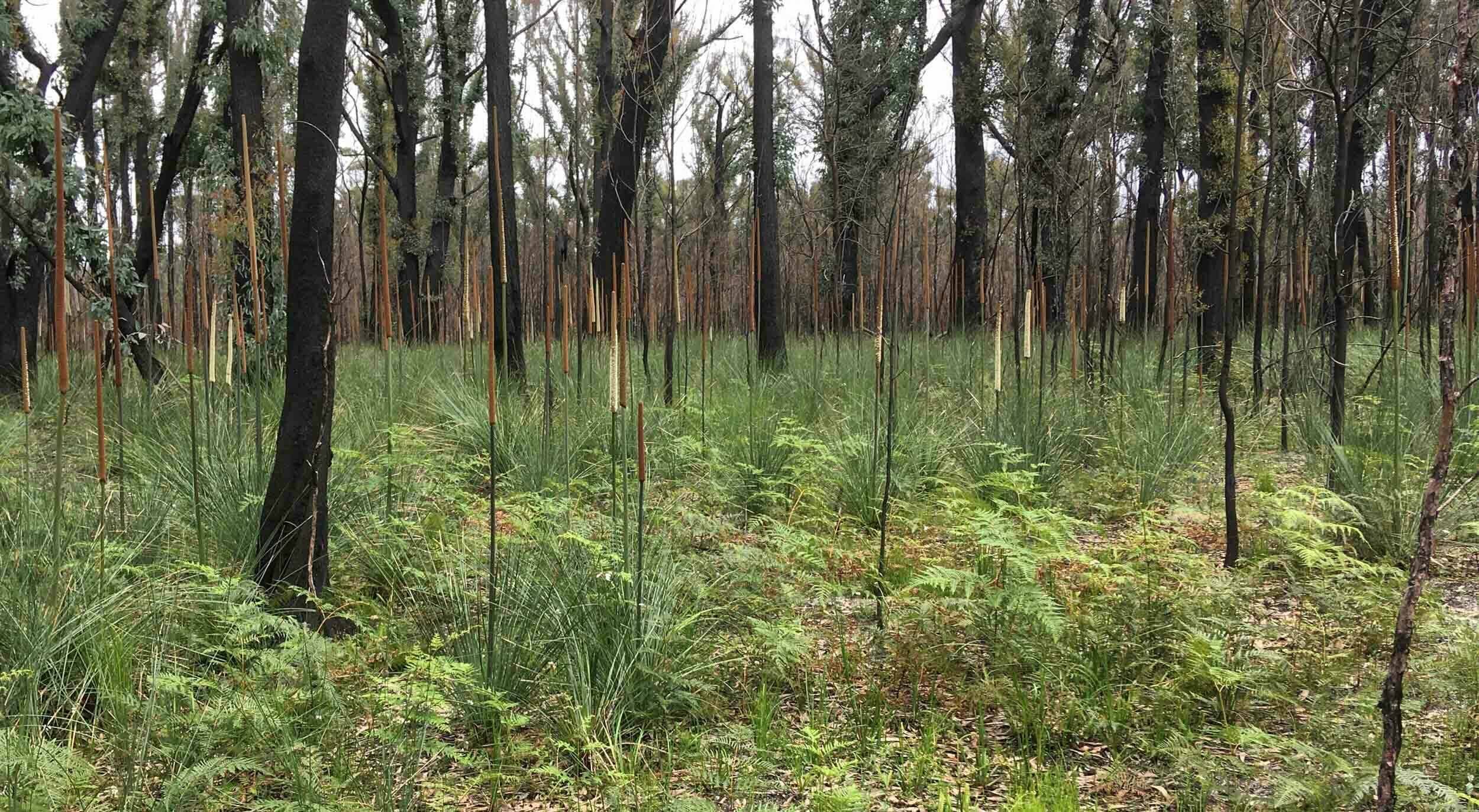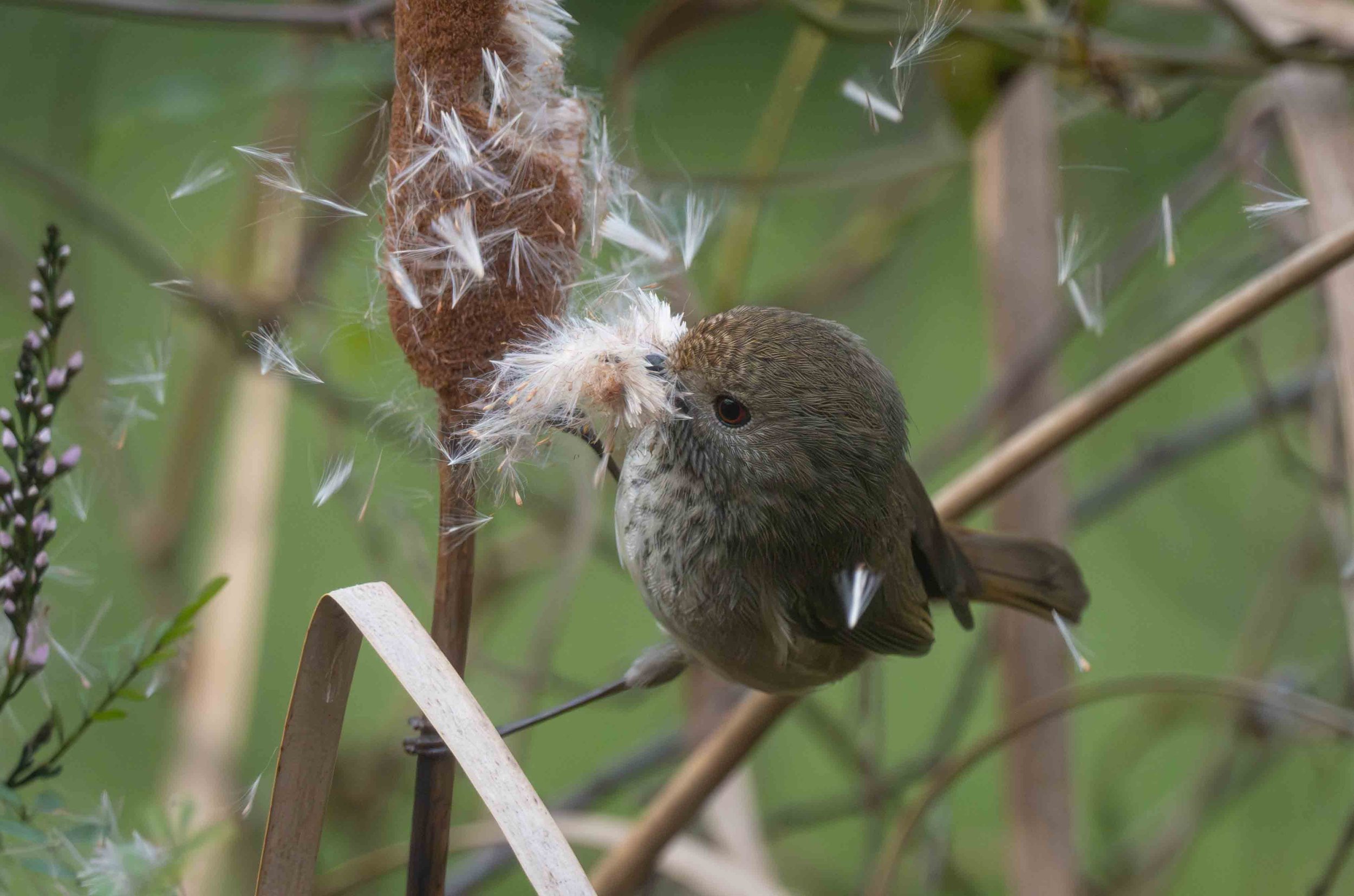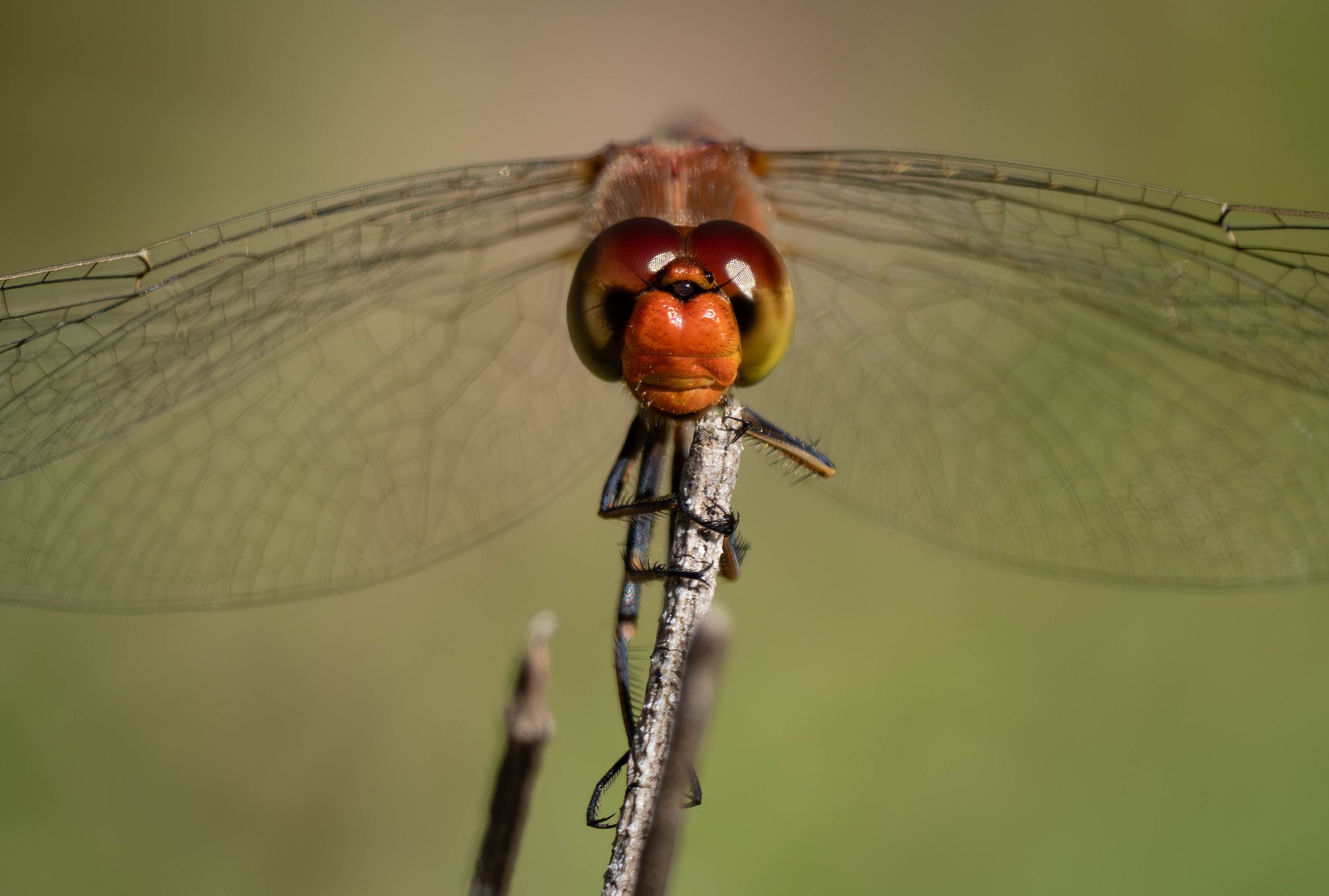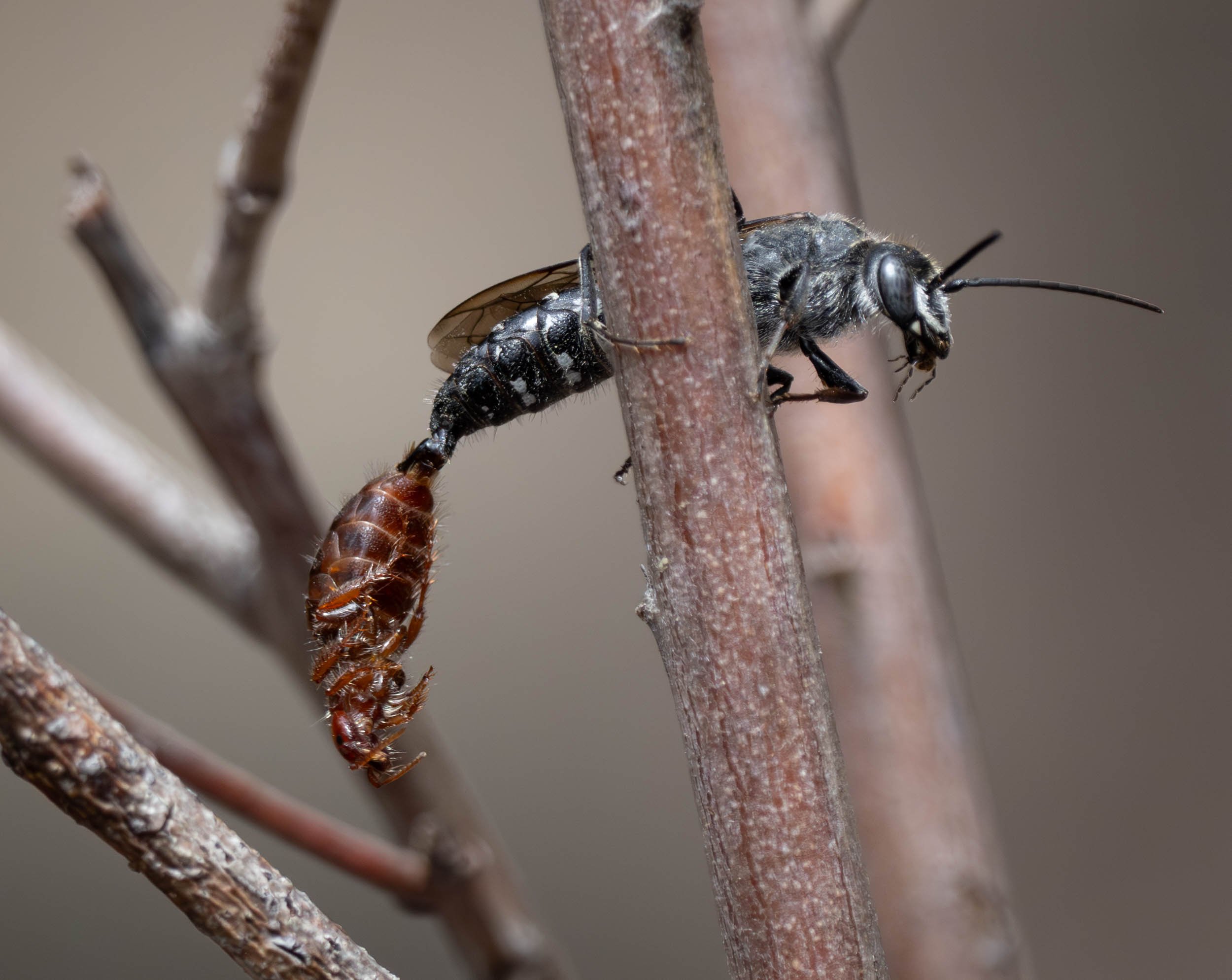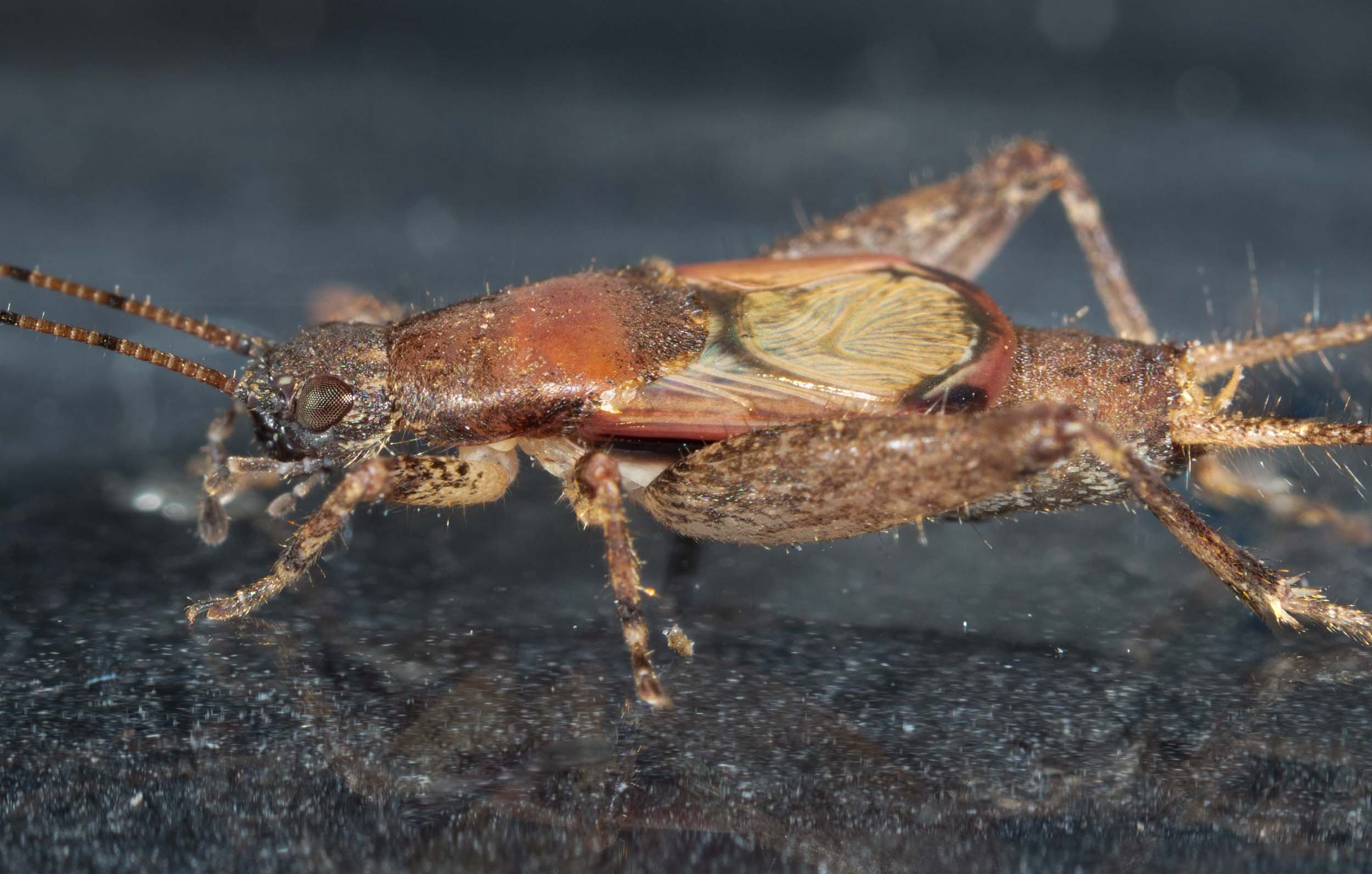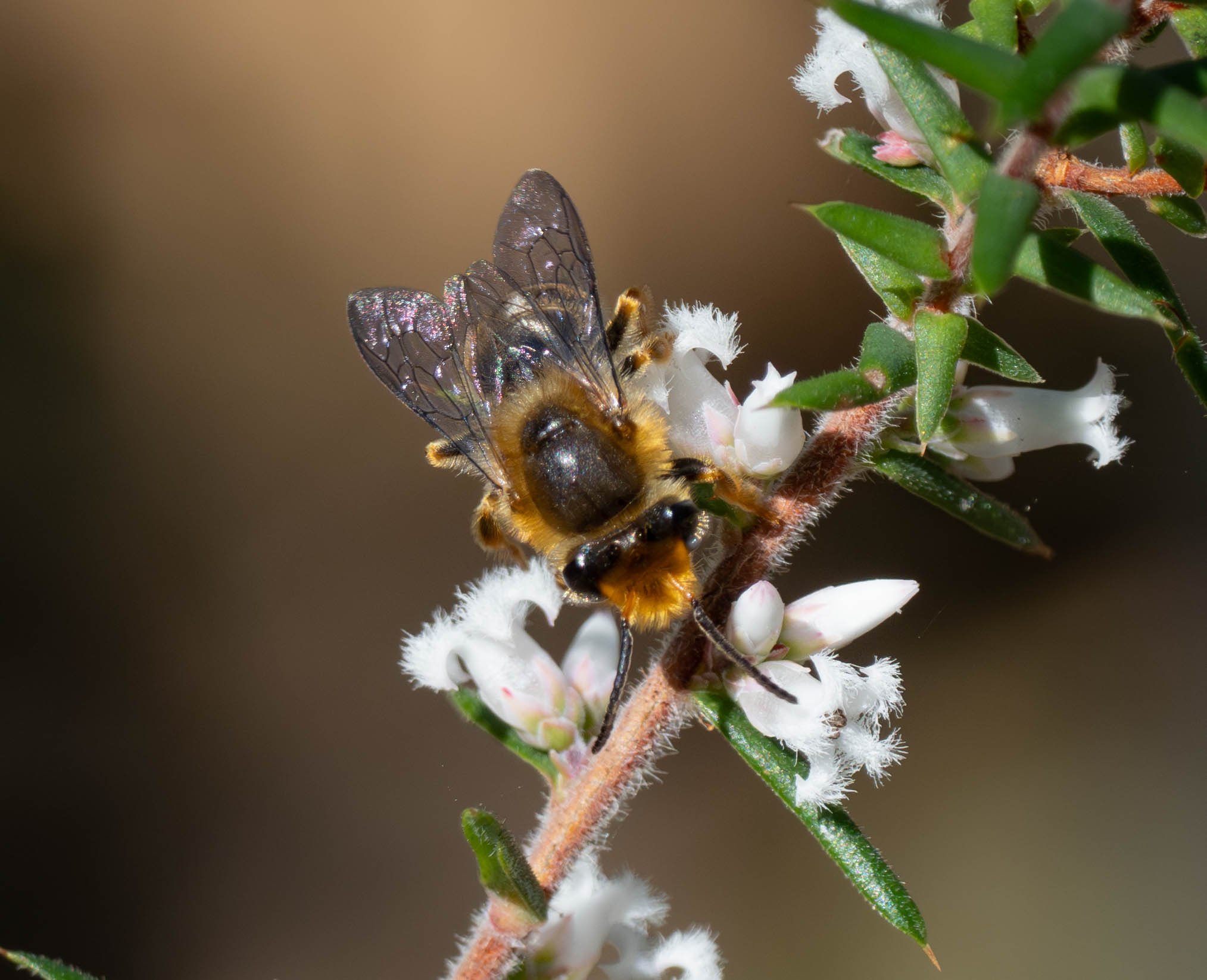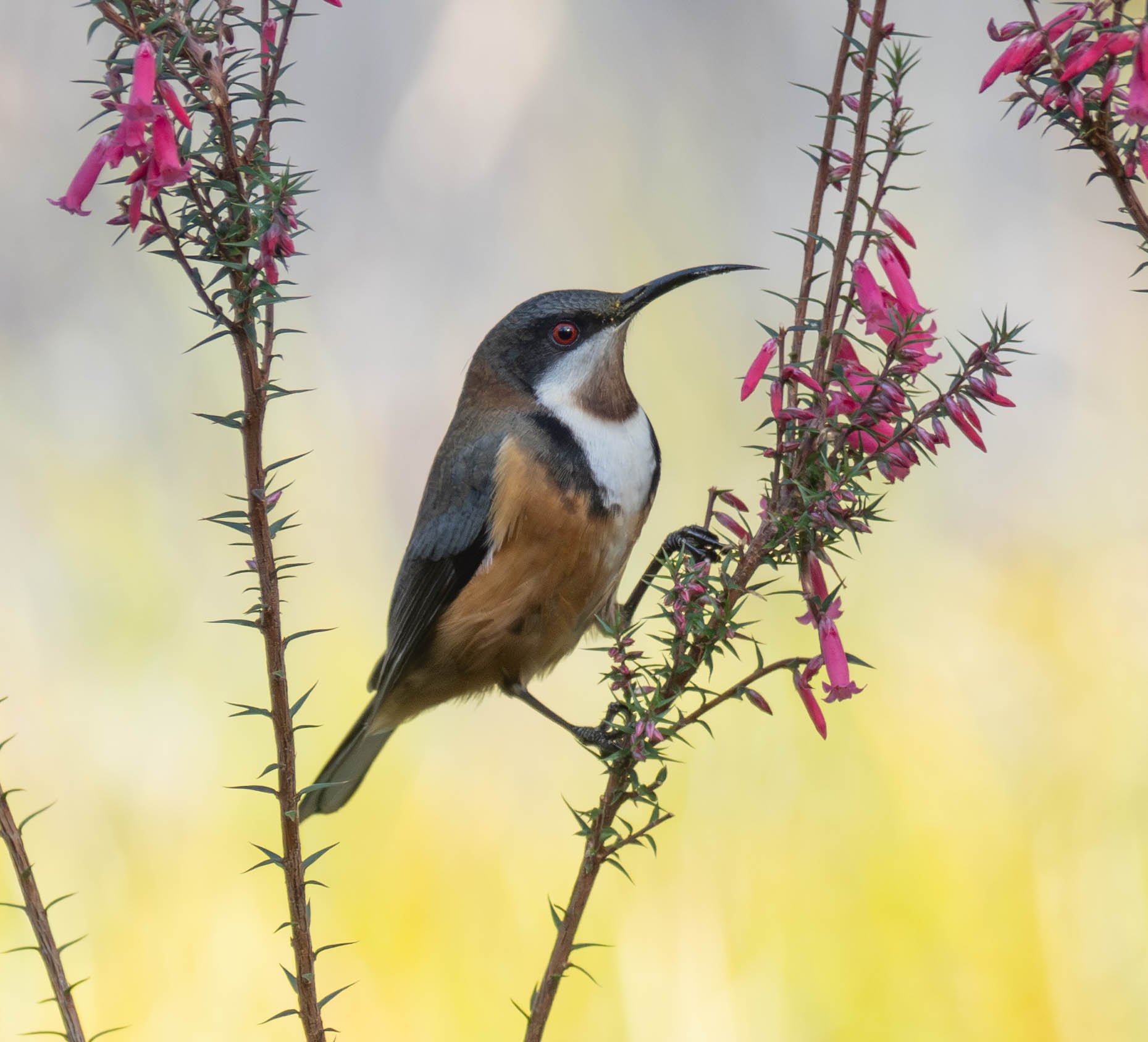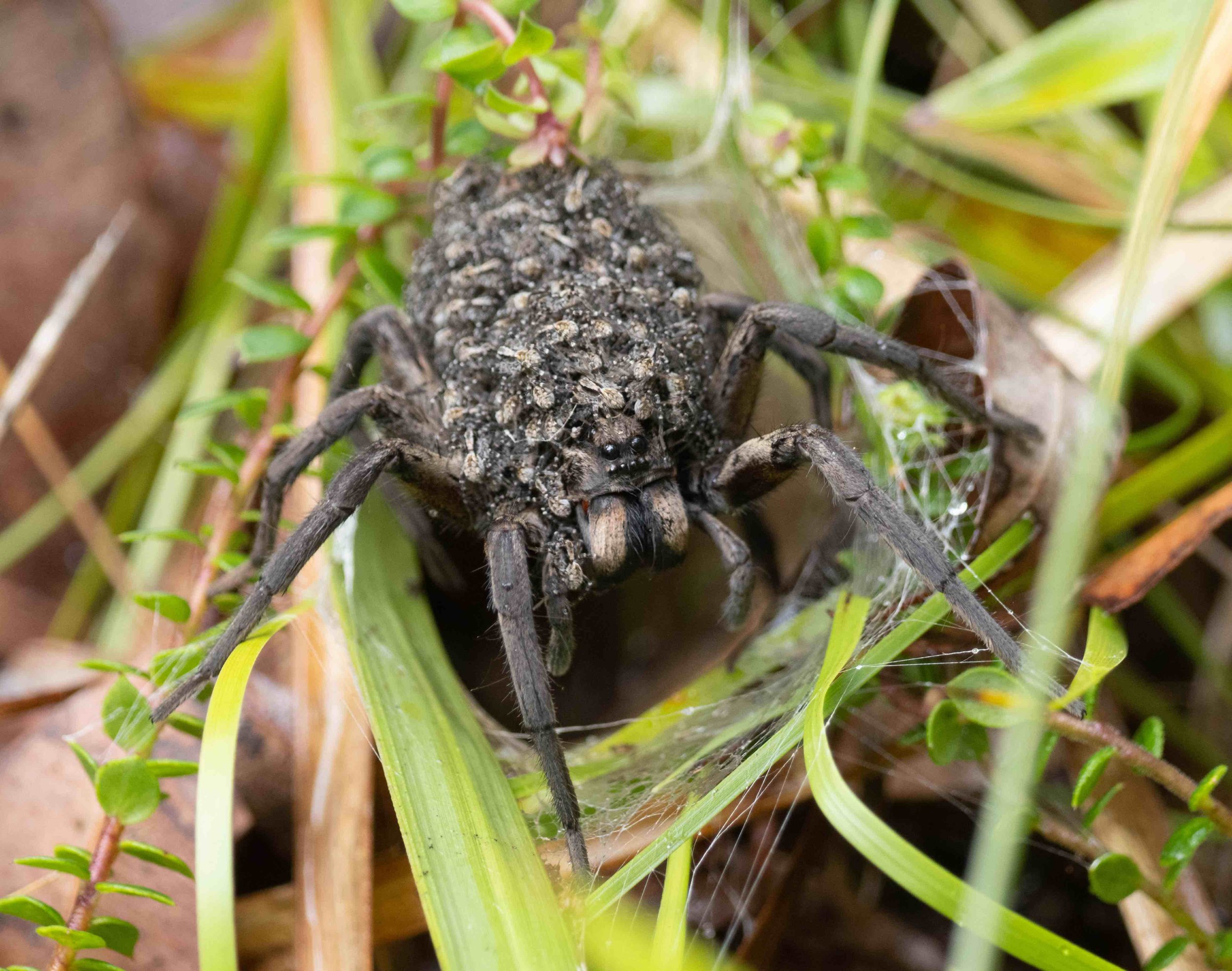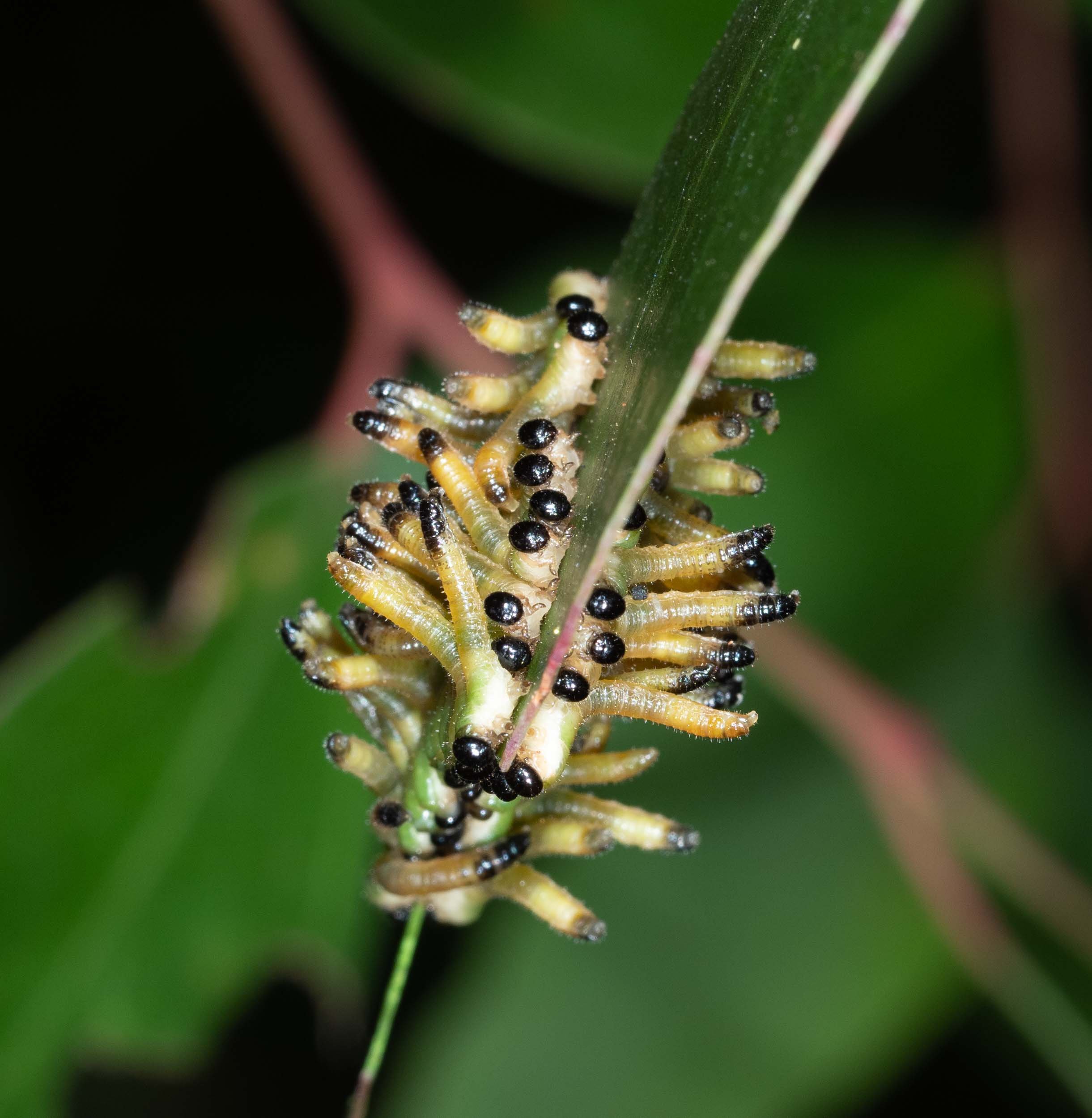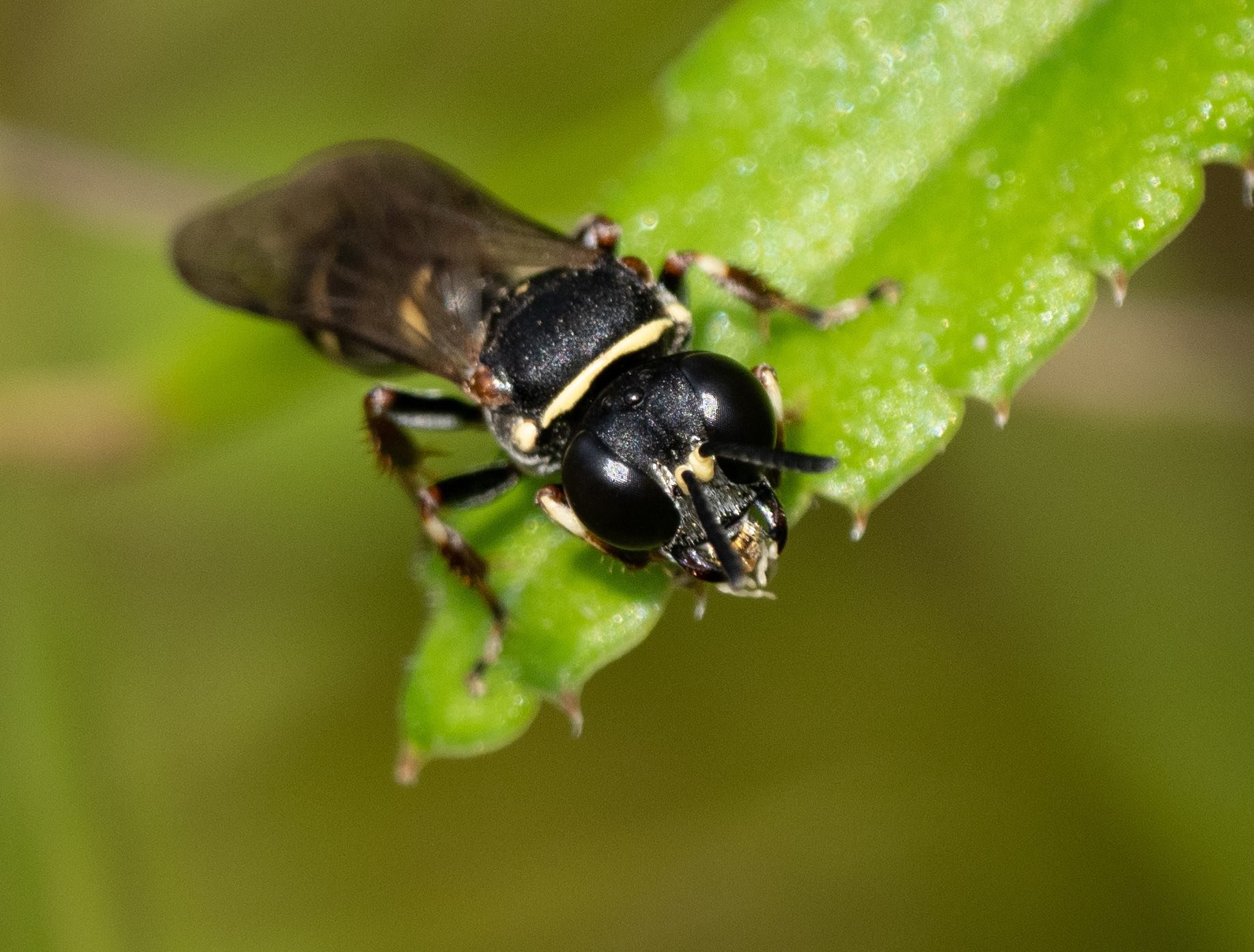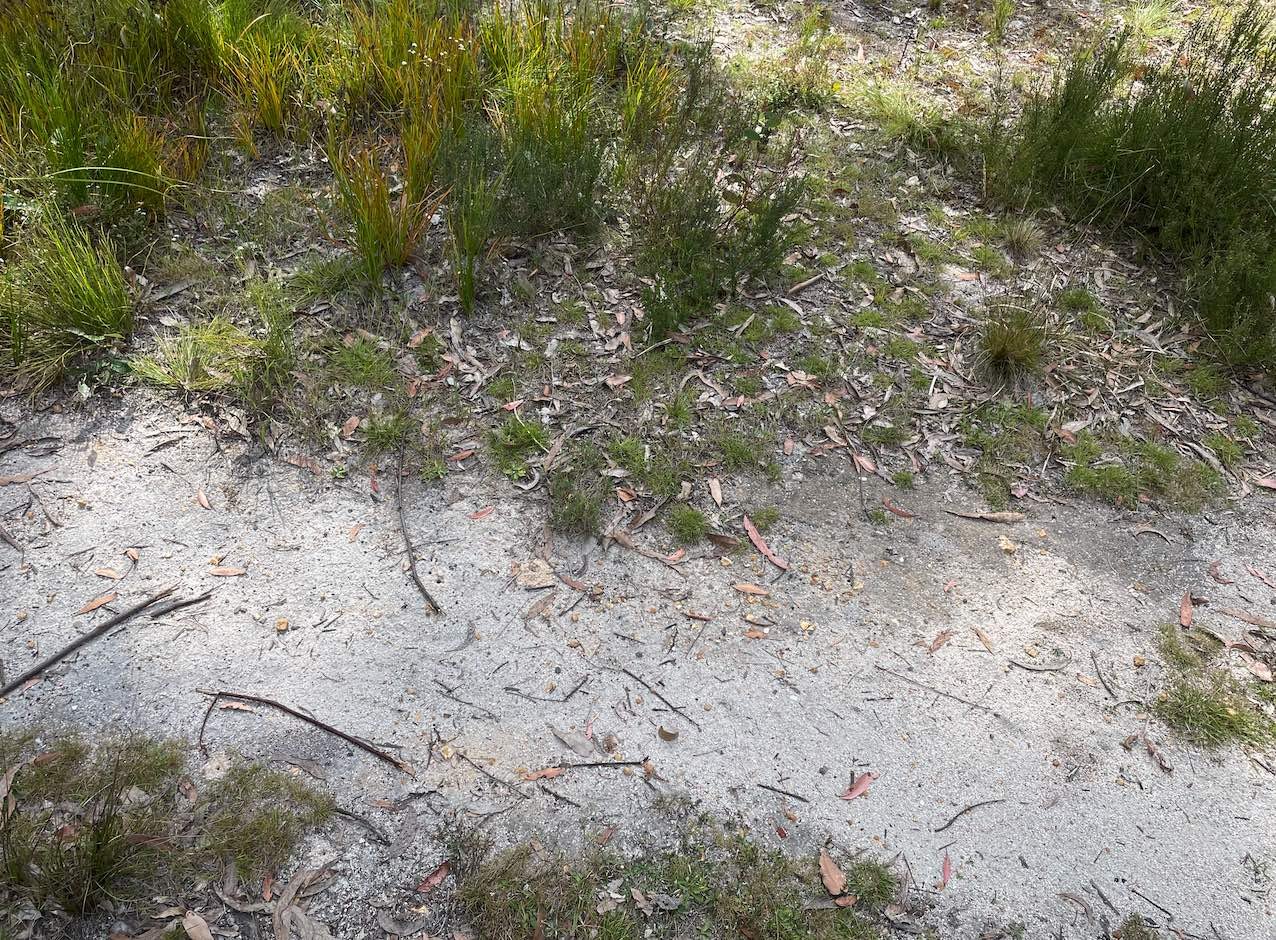batch 6
New places, new faces
“What did you do with your summer holidays Kerri-Lee?”
Well, let me tell you all about it! I broadened my home range and met several new faces … and some rather special ones at that!
Includes accounts of: Acanothostethus (Crabronidae: Nyssonini); Pseudoturneria (Crabronidae: Crabronini; Megalyra (Megalyridae); and Pseudofoenus (Gasteruptiidae)
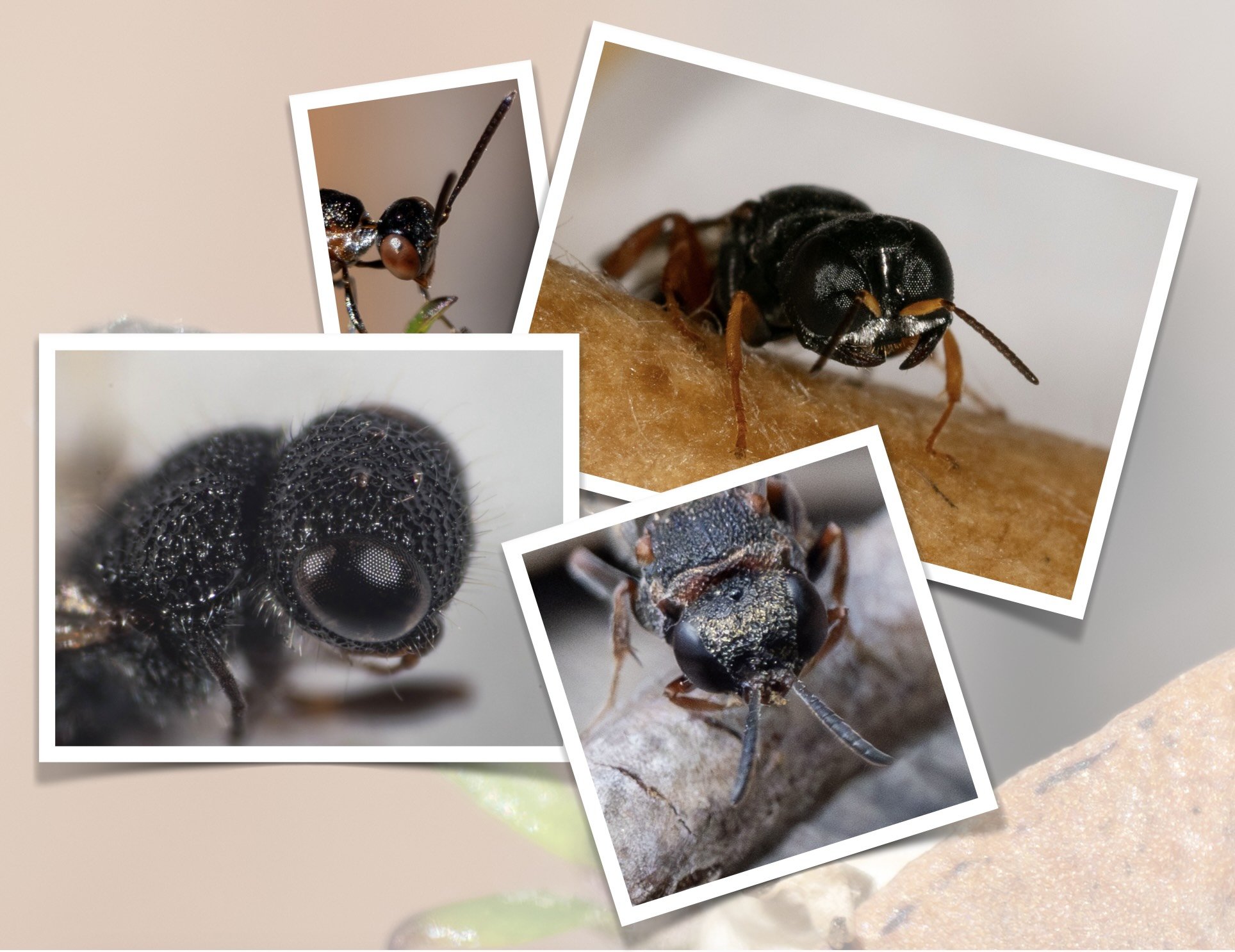
Cerceris: an almost-social wasp
Like most Crabronids, Cerceris are solitary wasps. Intriguingly, however, a few species display behaviours reminiscent of social insects. Our local species, Cerceris antipodes, is one such. I delve into the research literature to learn more about their nesting habits.
